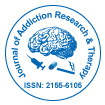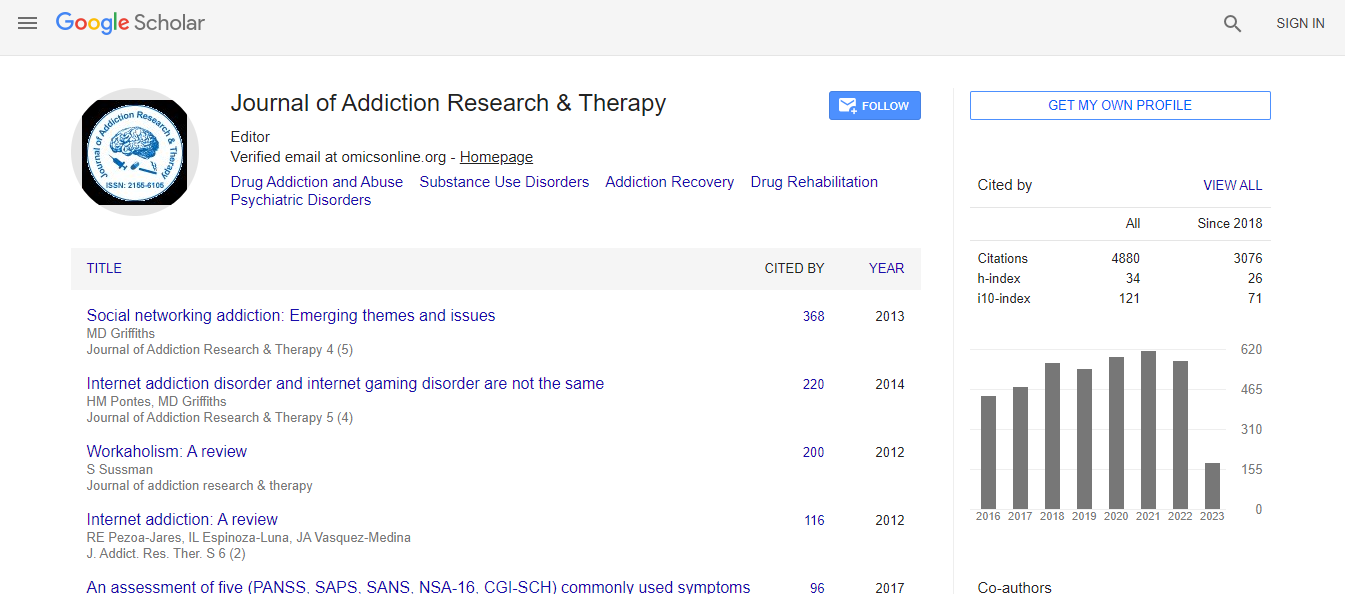Research Article
Children Born to Heroin-Addicted Mothers: What's the Outcome 25 Years Later?
Gemma Sanjuan Herranz1, Maria Ángeles López Vílchez2*, Josefa Díaz Ledo1 and Antonio Mur Sierra31Neonatology Department, Hospital del Mar, Passeig Maritim 25-29 08003, Barcelona, Spain
2Neonatology Department, Universitat Autónoma de Barcelona, Hospital del Mar, Passeig Maritim 25-29 08003, Barcelona, Spain
3Pediatric Service, Universitat Autónoma de Barcelona, Hospital del Mar, Passeig Maritim 25-29 08003, Barcelona, Spain
- Corresponding Author:
- Maria Ángeles López Vílchez
Neonatology Department
Universitat Autónoma de Barcelona. Hospital del Mar
Passeig Maritim 25-29 08003, Barcelona, Spain
Tel: 0034 93 2483500
Fax: 0034 93 2483254
E-mail: 93488@parcdesalutmar.cat
Received date: February 19, 2014; Accepted date: April 14, 2014; Published date: April 25, 2014
Citation: Herranz GS, VÃlchez MAL, Ledo JD, Sierra AM (2014) Children Born to Heroin-Addicted Mothers: What’s the Outcome 25 Years Later? J Addict Res Ther 5:180. doi:10.4172/2155-6105.1000180Copyright: © 2014 Herranz GS, et al. This is an open-access article distributed under the terms of the Creative Commons Attribution License, which permits unrestricted use, distribution, and reproduction in any medium, provided the original author and source are credited.
Abstract
Objective: The aim of this descriptive cross-sectional study is to show the long term evolution of children born to heroin-addicted mothers, focusing on social development, psychiatric disorders and substance abuse disorders.
Methods: 30 subjects born to heroin-addicted mothers between 1985 and 1990 were cited to complete an interview with 101 questions about their socioeconomic environment and social development, mental health and drug consumption. It was performed a descriptive analysis of the sample and the variables were compared using contingency tables and the Fisher’s exact test.
Results: We noted a high percentage of parental abandonment (56.2% of subjects lost one or both parents, 44.4% of subjects lived in extended care and 23.3% who were adopted or lived in shelter centers), and a high rate (26%) of emotional or physical abuse in childhood. Regarding socioeconomic development, most subjects were classified as having a medium or high socioeconomic level (80%), however social problems, which were measured as arrestments or imprisonment, were frequent. One third of the subjects had been diagnosed with some psychiatric disorder in childhood, most of them presented attention deficit disorder and hyperactivity and major depression, and we also found a 66.7% of subjects susceptible to have personality disorders. Drug consumption was very high across the sample; 70% of subjects had consumed cannabis in the previous year, 30% of people consumed cocaine in the last 12 months, 20% amphetamine, 13.3% of them had consumed ecstasy, 13.3% used hallucinogens and 2 people referred consumption of heroine. The use of alcohol also seemed to be high, as 5 people were classified as hazardous drinkers.
Conclusion: Subjects born to heroin-addicted mothers may be at risk of having social problems, psychiatric problems and illicit substance use disorders, therefore they could therefore benefit from close monitoring after birth to minimize and control the risks.

 Spanish
Spanish  Chinese
Chinese  Russian
Russian  German
German  French
French  Japanese
Japanese  Portuguese
Portuguese  Hindi
Hindi 
